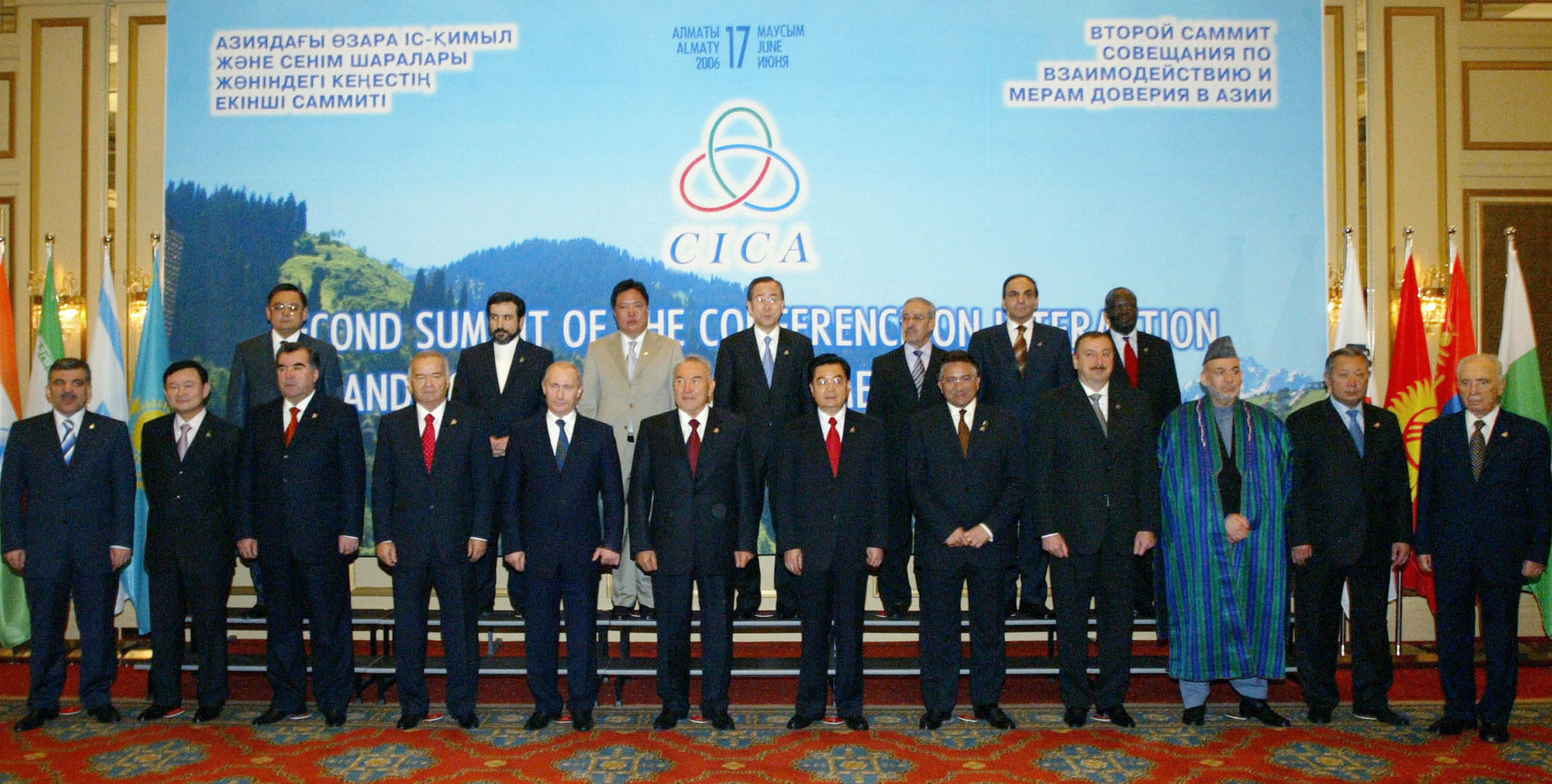When the President of the Islamic Republic of Iran, Ebrahim Raisi, visits New York this week for the opening of the United Nations General Assembly (UNGA), he will try to project a sense of confidence. Since his inauguration in August 2021, Raisi’s government has achieved a series of foreign policy victories, which he may point to: Iran’s entry into the Shanghai Cooperation Organization (SCO), the normalization of relations with Saudi Arabia and an invitation to join the BRICS. originally including Brazil, Russia, India, China and later South Africa) have all taken place under his watch. The regime also managed to survive the serious protests following the death of Mahsa Amini, who began to consume the Islamic Republic when Raisi was in Turtle Bay last year.
He will try to show that Tehran has neutralized international sanctions, ended its isolation and reversed the Abraham Accords by preventing their expansion into an anti-Iranian bloc. Combined with a healthy dose of toxic anti-Israel rhetoric, Tehran will try to project that it is Israel, not Iran, that is isolated, while the Iranian regime is reportedly committed to building ties with its neighbors. A possible planned meeting of foreign ministers of Iran, Iraq and Gulf Cooperation Council member states on the sidelines of the UNGA – billed as a new, emerging regional dialogue forum – will reinforce this perception.
One meeting in New York, however, will undoubtedly turn the myth-making of the Islamic Republic on its head, and that is an informal meeting of the Council of Ministers of the Conference on Interaction and Confidence-Building Measures in Asia (CICA), scheduled for September 21. 1999 as “a multinational forum for enhancing cooperation towards peace, security and stability in Asia.” Both Iran and Israel are member states, not to mention the Islamic Republic’s Arab rivals, which regularly creates an uncomfortable dynamic. It also demonstrates the limitations of regional dialogue platforms at a time when Middle Eastern countries are pursuing de-escalation and engagement.
Violating the founding documents of the CICA and the close meetings between Iran and Israel
One of the foundational documents of the CICA is the 1999 Declaration on the Principles Governing Relations among CICA Member States. It says that “Member States shall refrain in their relations from the direct or indirect threat or use of force against the sovereignty, territorial integrity and political independence of States, or in any other manner inconsistent with the UN Charter and with the current statement. . No considerations may be put forward which would justify the threat or use of force contrary to this principle.” Despite this commitment as a member of the CICA, the Islamic Republic has been threatening to wipe Israel off the map for more than four decades.
In June 2006, at the second CICA summit in Almaty, Shimon Peres, then Israel’s Deputy Prime Minister and Minister for the Development of the Negev and Galilee, came face to face with Abbas Araghchi, then Iran’s Deputy Foreign Minister . . In fact, both men posed together for a “class photo” and signed a joint statement after the summit condemning “terrorism in all its forms and expressions and stresses.”[ed] that there is no justification for terrorism,” and commit to multilateralism to combat the threat and “avoid double standards” in its eradication. This happened just weeks before the 2006 Lebanon War, which was caused by Tehran’s proxy Hezbollah kidnapping two Israeli soldiers and later firing 4,000 rockets into Israel, resulting in the deaths of about 50 Israeli civilians. Hezbollah is designated by the United States as a foreign terrorist organization.

At the next CICA summit, in 2010, Iran’s then president, Mahmoud Ahmadinejad, appeared along with Israel’s ambassador to Turkey, Gabby Levy. At a press conference at the CICA, Ahmadinejad railed against Israel, saying: “The devilish noise of the uncivilized Zionists came from their deception. […] they held up the devil’s flag.” Levy walked out in protest, despite both men later appearing again together in a group photo. This meeting was followed by a statement similar to that of the 2006 summit, in which Member States “drew special attention to the need to prevent terrorism by combating ideologies that justify it.” But in early 2012, the Iranian government led attempted attacks on Israeli diplomats in Azerbaijan, India, Georgia and Thailand; Many saw this campaign as a response to Israel’s killings of nuclear scientists in Iran who helped advance its nuclear program, which threatened the Jewish state. Not to mention Iranian proxy Hezbollah bombing a bus carrying Israeli tourists in Bulgaria in July 2012 and Israeli Prime Minister Benjamin Netanyahu’s famous Red Line speech before the UN General Assembly in September, where he condemned the Islamic Republic threatened as it continued its nuclear program. . CICA statements therefore had no impact on bilateral tensions between the two countries.
This pattern of Iranian and Israeli representatives both participating in CICA summits and meetings has continued for years, even as regional tensions between the old enemies exploded. At the summits that took place every four years, Iranian presidents traditionally represented the Islamic Republic. But Israel has taken a different approach, sending lower-level diplomats to represent the Jewish state, with the exception of Shimon Peres in 2006.
For example, during the last CICA summit, in October 2022, Tehran sent President Raisi. Close to him in the family photo is Simona Halperin, deputy director general of the Israeli Ministry of Foreign Affairs, Eurasia and the Balkans Department, who led the Israeli delegation at the summit. And despite the two countries’ joint membership in the CICA, David Barnea, the director of Israel’s Mossad, the foreign intelligence organization, announced this month that Israeli security services and their partners have foiled 27 plots hatched by the Islamic Republic to to attack Jews and Israelis this year. years alone. Obviously, such a dynamic is contrary to CICA’s founding documents.
The awkwardness has extended to CICA discussions at working level. For example, in August 2023, the Kazakh Ministries of Foreign Affairs and Defense, together with the CICA, organized a seminar on the development of military-political confidence-building measures, with fourteen representatives of the CICA member states. In photos circulating from the meeting, Iranian military officers appeared to be present at the same table as an Israeli military officer. Yet this participation has not changed the threat perception and strategic posture of both countries.
Beyond Israel
The CICA’s restrictions extend beyond Israel. The declaration also stipulates that “Member States must refrain from any interference in the internal affairs of another Member State.” However, the Islamic Republic has violated this condition with impunity when it comes to another CICA member, Bahrain. It has funded and resourced the al-Ashtar Brigades, which have attacked Bahraini police and security forces. In 2015, Manama even accused Tehran of inciting “confessional sedition.”
The United Arab Emirates, another CICA country, has also had a troubled history with Tehran, despite the recent thaw in relations following the restoration of full diplomatic ties last year. Tehran’s Houthis partners in Yemen, the Houthis, ignored mounting pledges to refrain from using force against another CICA member state and launched missiles into Emirati territory in 2022 and also plotted attacks on diplomatic facilities of the UAE in Africa.
The same in Iraq, which is also a CICA member state. The Islamic Republic has used Iraq as a launching pad for attacks on other CICA members, not least Israel. For example, in 2022, US fighter jets downed two Iranian drones over Iraq that were armed to explode on Israeli territory. The Declaration of CICA Principles document states very clearly that “Member States shall respect the territorial integrity of each other” and renounce the use of force against any other Member State. Tehran would likely claim that it is acting in self-defense, which is preserved in this document; but Israel would counter that it is also trying to deter and defend itself against the Islamic Republic, which daily arms and finances terrorist militias bent on its destruction.
Besides the CICA, other organizations have also existed for years without changing the foundations of Tehran’s revolutionary foreign policy. This can be seen in the work of the Organization of Islamic Cooperation (OIC), which counts Iran and its regional rivals, including Saudi Arabia and the UAE, as members. The OIC predates the 1979 Islamic Revolution, but its mission “to work towards the settlement of conflicts and disputes involving Member States” has not moved the needle in a transformative way.
The Islamic Republic is already considering the use of UN Security Council Resolution 598, which called for a ceasefire during the 1987 Iran-Iraq war, as a mechanism to promote future regional dialogue. Resolution 598 specifically calls for “the [U.N.] Secretary-General to explore, in consultation with Iran and Iraq and with other states in the region, measures to enhance the security and stability of the region.”
However, the above history shows that while Iran will try to demonstrate its good neighborliness at the opening of the UNGA by promoting and referencing its membership in various regional dialogue forums, their existence has historically not moderated Iranian behavior. The assumptions underpinning their usefulness are flawed, as the Islamic Republic of Iran – despite occasional tactical adjustments to preserve the regime’s longevity – is a revolutionary power that seeks to dominate, not integrate, with the region.
Jason M. Brodsky is policy director of United Against Nuclear Iran (UANI) and a non-resident scholar at the Middle East Institute’s Iran Program. His research specialties include Iranian leadership dynamics, the Islamic Revolutionary Guard Corps (IRGC), and Iran’s relationship with Israel. He is on Twitter @JasonMBrodsky.
Photo by Iranian Presidency/Anadolu Agency via Getty Images
The Middle East Institute (MEI) is an independent, non-partisan, non-profit educational organization. It does not engage in advocacy and the opinions of its scholars are their own. MEI welcomes financial donations, but retains exclusive editorial control over its work and its publications reflect only the opinions of the authors. For a list of MEI donors, click here.


